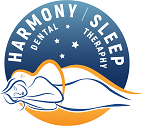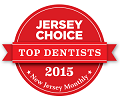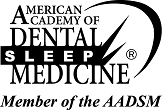Oral appliances are regulated by the Food and Drug Administration (FDA). It was determined at a meeting on medical devices in the Fall of 1997, that for purposes of treatment; snoring and OSA are considered medical diseases and that all oral appliance treatment of these diseases fall under FDA requirements. By 2010 over 65 devices had been granted premarket notification/510K acceptance, which means that they were found to be substantially equivalent to devices marketed before May 28, 1976; therefore, allowed to be marketed under the general controls of the Federal Food, Drug and Cosmetic Act rather than requiring specific FDA approval. Appliances which are new in concept (Class 3), with no prior similar device require Premarket Approval (PMA) by the FDA where submission of full statistical scientific data is required.
The FDA accepts oral appliance only for use in people over 18 years of age. All oral appliances are mandated to be available by prescription only, not over the counter. There are a number of documented side effects to the use of oral appliances. Short term side-effects are common and easily corrected. These include:
- Excessive salivary flow
- Dry mouth
- Joint pain
- Tooth pain
- Muscle pain
- If an appliance can remove a restoration, then the restoration was defective.
- Loosening of teeth
- Further damage to periodontally involved teeth
Long term problems may include labioversion of the maxillary teeth and repositioning of the mandible in a downward and forward direction. Research by Christopher Robertson, BDS, PhD shows that tooth and jaw movement continues unabated throughout a 3 year follow up period.
Long term changes can lead to a class III occlusal scheme spacing between the teeth which can exacerbate periodontal problems and alterations in a patient’s profile. Be aware that most patients are unaware of changes in their dentition until they are quite pronounced.
Close follow up is necessary. The AADSM guidelines call for a monthly follow up initially, recall every 6 months for two years and annual evaluations for as long as the patient wears an oral appliance.
Dentists who use oral orthotics (devices) to treat patients with obstructive sleep apnea (OSA) have a moral obligation to treat only those patients who have a mouth healthy enough to withstand the forces created by use of the designated orthotic device.
The treating dentist should have a good understanding of the signs and symptoms of OSA. He/she should understand a polysomnography report and be aware of any parasomnias which may impact resolution of symptoms with an oral orthotic. The dentist should not take it upon himself to diagnose OSA or try to be the only treatment provider. Diagnosis and treatment planning can only be done by a licensed medical provider. A dentist who refers patients for polysomnography should ensure that each patient has a primary care physician and that the primary care physician also gets a copy of the polysomnography report.
Radiographs necessary for the diagnosis of dental disease and proper evaluation of the patient’s periodontal health must be obtained from the patient’s dentist or taken by the sleep dentist. This should include, but not be limited to:
- Medications the patient is taking
- Review of Systems (At least 11)
- History of the symptoms of OSA and previous treatments
- Dental examination:
- Decayed, missing and restored teeth (with attention to ill-fitting restorations)
- Occlusal classification
- Open interdental contacts
- Overbite, overjet, mobility status
- Maximum interincisal opening
- Range of normal jaw protrusion
- Occlusal wear patterns, evidence of bruxism, clenching
- TMJ (temporomandibular) evaluation:
- Muscle pain
- Joint noises, pain
- Soft tissue evaluation:
- Tongue size, topography and lingual extension
- Neck circumference
- Throat classification (Mallampati and Friedman)
- Mucosal abnormalities
- Periodontal probing abnormalities, furcation involvement, etc.
- Bony topography:
- Shape, width and depth of hard palate
- Jaw size abnormalities both front to back and side to side
- Mandibular plane angle
Patients who are to receive an appliance that holds the mandible forward in relationship to the maxilla (mandibular repositioner) should meet certain criteria to minimize negative side-effects:
- The patient must have 6 or more healthy teeth in each arch
- At least one posterior tooth per quadrant
- Dentition should be stable
- Major dental care should be completed prior to orthotic fabrication
- TMJ disease should not be acute
If the patient’s dental health does not meet the requirements for a mandibular repositioner, then a tongue retaining device may be the orthotic of choice.
Decision as to which FDA accepted oral orthotic will be used is based on:
- Patient's medical history: If a patient has asthma and requires the use of an inhaler, the oral orthotic chosen should allow use of necessary medical devices without the need to remove the orthotic.
- History of bruxism or clenching: Will the abnormal forces created by these parafunctions be poorly withstood by a specific appliance?
- Oral anatomy: If the patient has a large torus palatini, or very narrow arches, an orthotic with minimal intra-arch presence should be the first consideration.
Evaluation should be independent of orthotic fabrication, but not all insurers will pay for an evaluation visit. The patient should have a clear understanding of the various options of treatments available for OSA, be aware of the possible side effects that oral orthotics may cause and know that the American Academy of Sleep Medicine considers CPAP the treatment of choice in all instances of obstructive sleep apnea. The patient should be reappointed for appliance fabrication to allow proper 'comprehension' of all the information given at the initial visit. To not inform patients of possible side-effects or to rush a patient into one mode of therapy is inappropriate medical care.
All custom fitted appliances accepted by the FDA for the treatment of OSA requires that the dentist make molds of the patient’s mouth and, often provide a "bite registration" using a George Gauge™, gothic arch tracer or one of the other devices that will tell the dental laboratory how to orient the upper and lower casts in both horizontal and vertical planes. To the best of our knowledge, only licensed laboratories are allowed to fabricate FDA accepted oral appliances.
Placement of the orthotic can require from 20-60 minutes of time with the dentist. Some dentists allow ancillary staff to do many of the procedures involved in appliance fabrication and placement. If so, the staff should be exceptionally well trained (EFDA or hygienist) and the dentist should provide constant oversight of care and thoroughly examine all work done by the ancillary provider prior to the completion of the patient’s appointment.
Follow up appointments are required frequently in the first few months after placement of the orthotic. This allows for adjustment of the appliance to improve fit, patient comfort and compliance.
The American Academy of Dental Sleep Medicine recommends that patients be seen every 6 months for 2 years after placement of an orthotic. After that time, the patient should be seen annually for as long as the patient wears the orthotic.
• • •
|
|
| ``` PHYSICIAN REFERRAL FORM |
| SLEEP APNEA SELF TEST |
| SLEEP JOURNAL |
|
MARIA SOKOLINA D.D.S. 1066 Clifton Ave. Clifton, NJ 07013-3616 315 W57th Str, Ste 209, NYC, NY 10019 (973) 777-2731 (212) 960-8919 |
|
OFFICE HOURS: Mon: 8:00am - 5:00pm | Tue: 8:00am - 7:00pm Wed: 8:00am - 4:00pm | Thu: 8:00am -7:00pm Fri: 8:00am - 3:00pm | Sat: 8:00am - 2:00pm |







CONNECT WITH US

